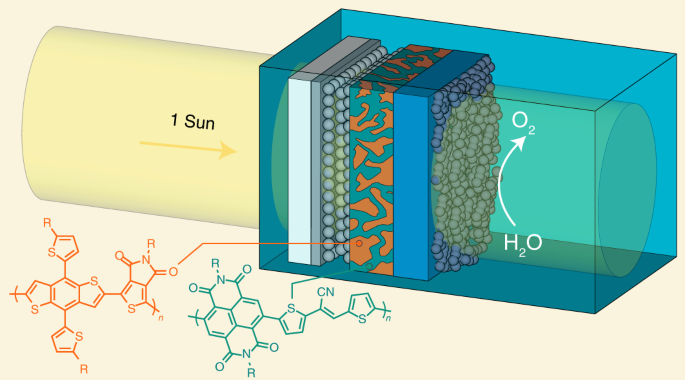
Natural photosynthesis converts water and sunlight into oxygen and chemical energy. The ability to convert sunlight into a chemical fuel, so-called solar fuel, in an economical and globally scalable way would be a very attractive method to lessen humankind’s dependence on fossil fuels on Earth.
Natural photosynthesis
Consequently, scientists have been searching for decades for ways to mimic natural photosynthesis efficiently and inexpensively. For example, Jan van Maarseveen, professor of Bio-inspired organic synthesis (University of Amsterdam), is trying to create ring-shaped molecules with the goal of releasing electrons.
Semiconducting polymers
A different path is being pursued in Switzerland. In a study this month published in Nature Catalysis, American professor Kevin Sivula and his team outlined a mixture of semiconducting polymers, also called organic electronics, that demonstrates highly efficient solar-powered water oxidation. Sivula is head of the Laboratory for Molecular Engineering of Optoelectronic Nanomaterials at the École Polytechnique Fédérale de Lausanne.
Previous studies using inorganic materials, such as metal oxides or silicon, did not meet the cost and performance requirements set by the industry. The polymeric materials reported in Sivula’s Swiss study have properties that can be tuned on a molecular level and are soluble at low temperatures. This would enable large-scale fabrication at low cost.
Efficient and scalable
Due to the potential of this approach, the system developed by Sivula and colleagues could contribute significantly to advances in polymer-based electronics. The breakthrough could be the beginning of solar heat production by artificial photosynthesis in an economically efficient and scalable way.
Read how scientists at the University of Cambridge have also taken steps in the direction of artificial photosynthesis.


